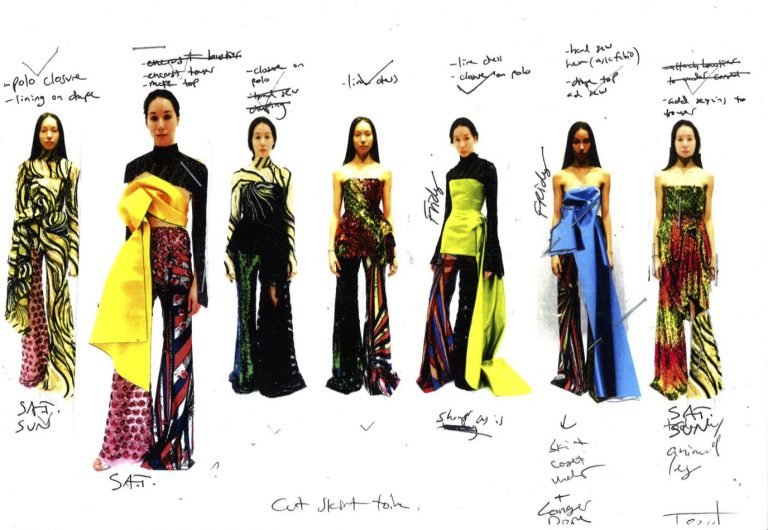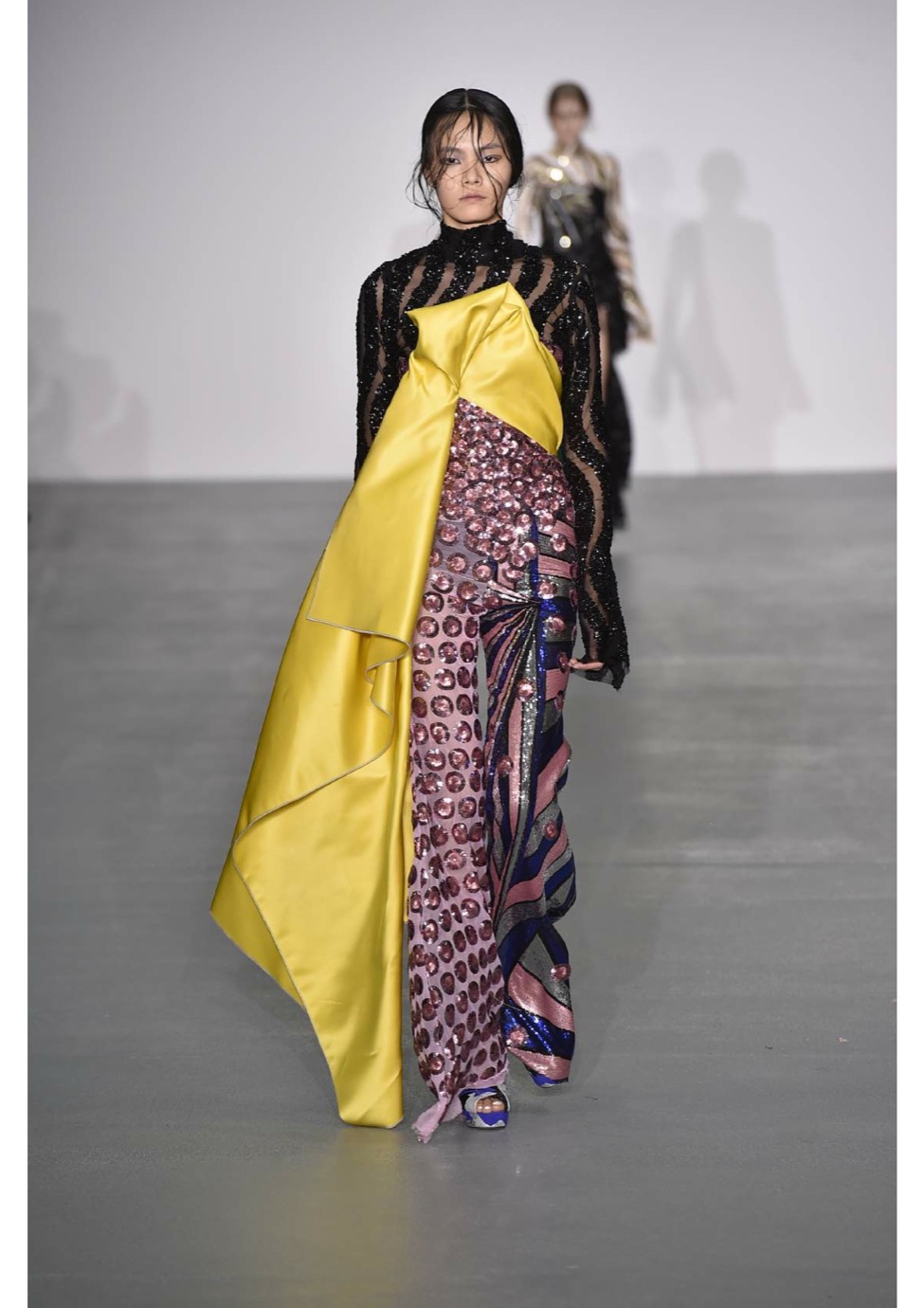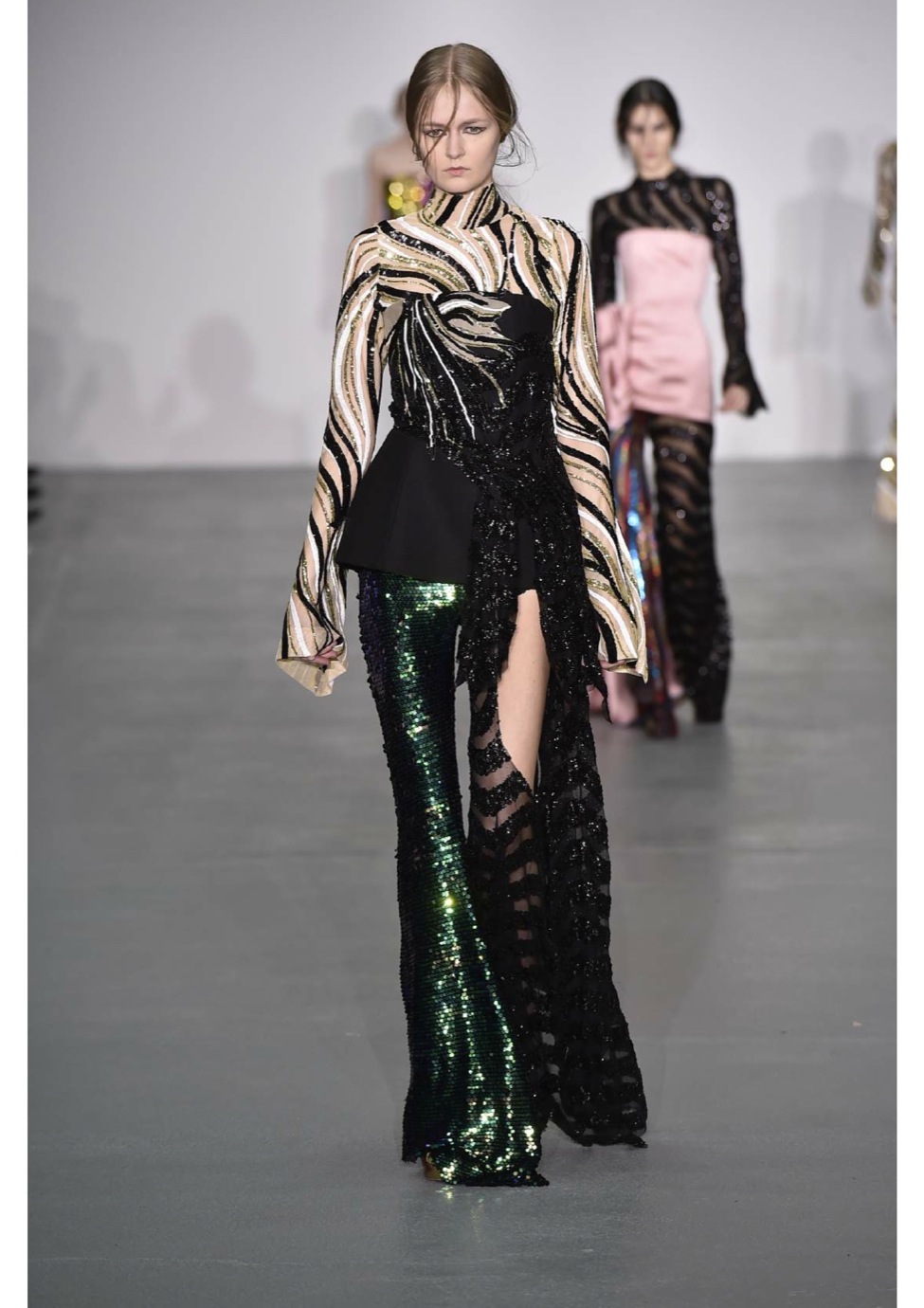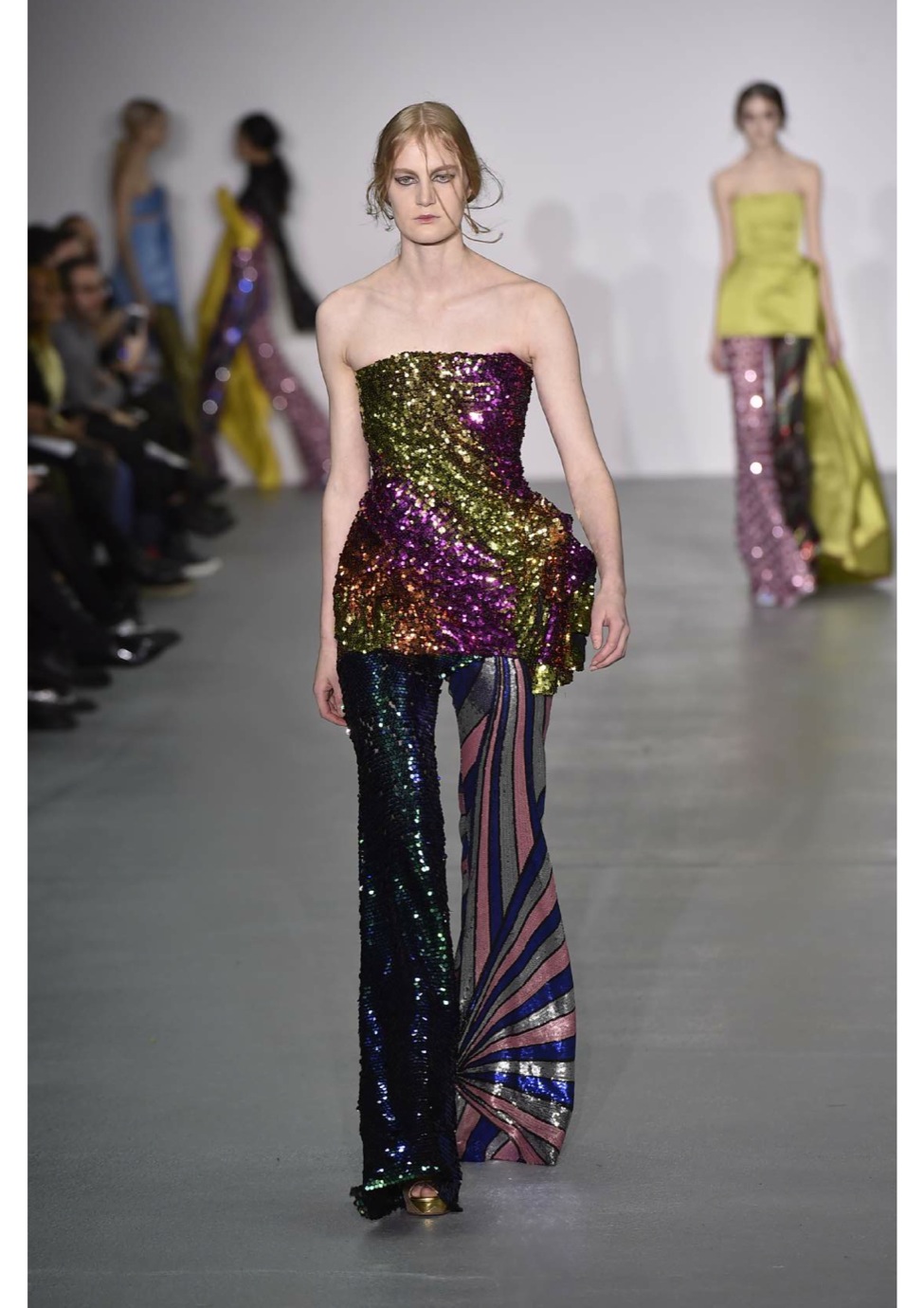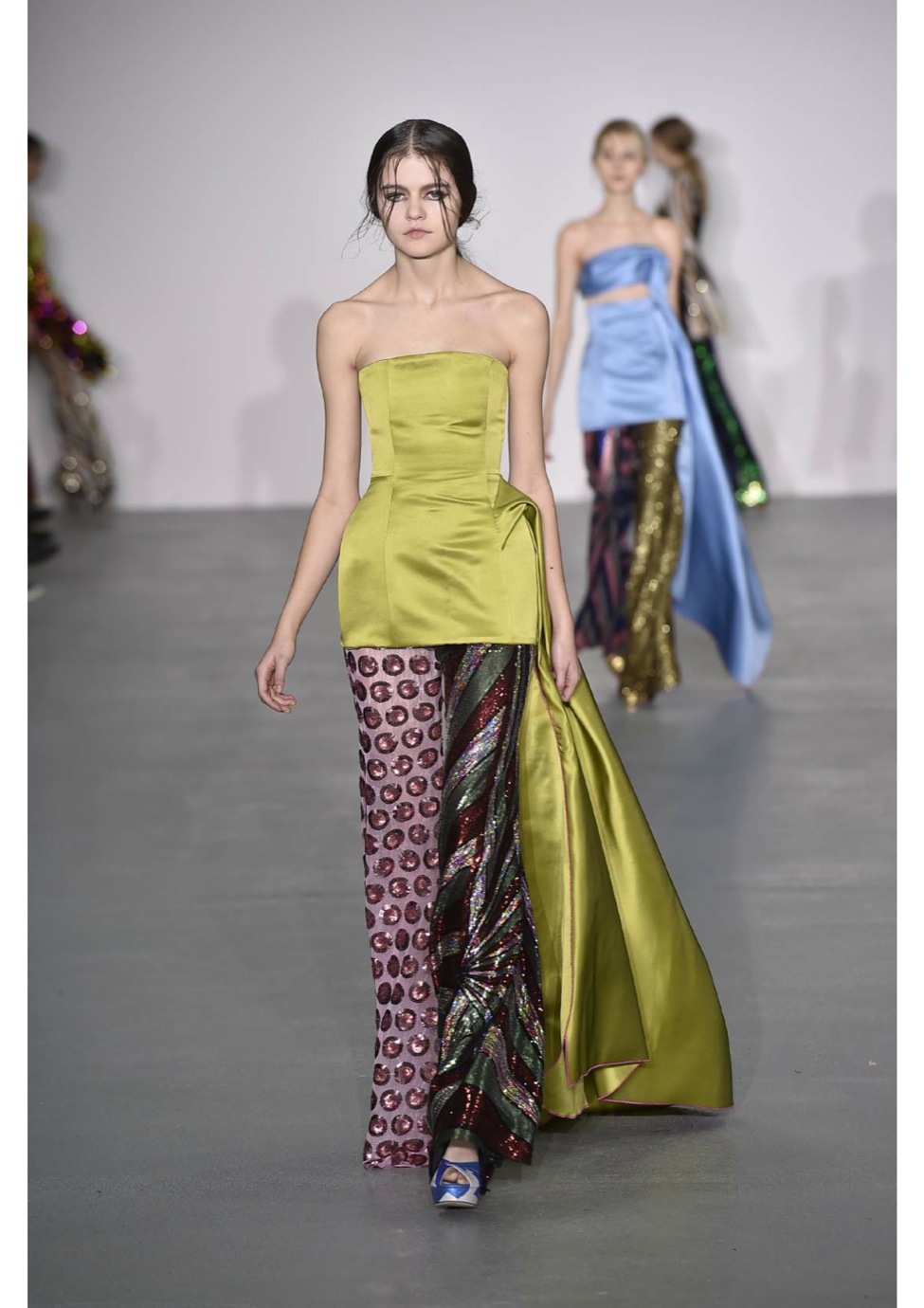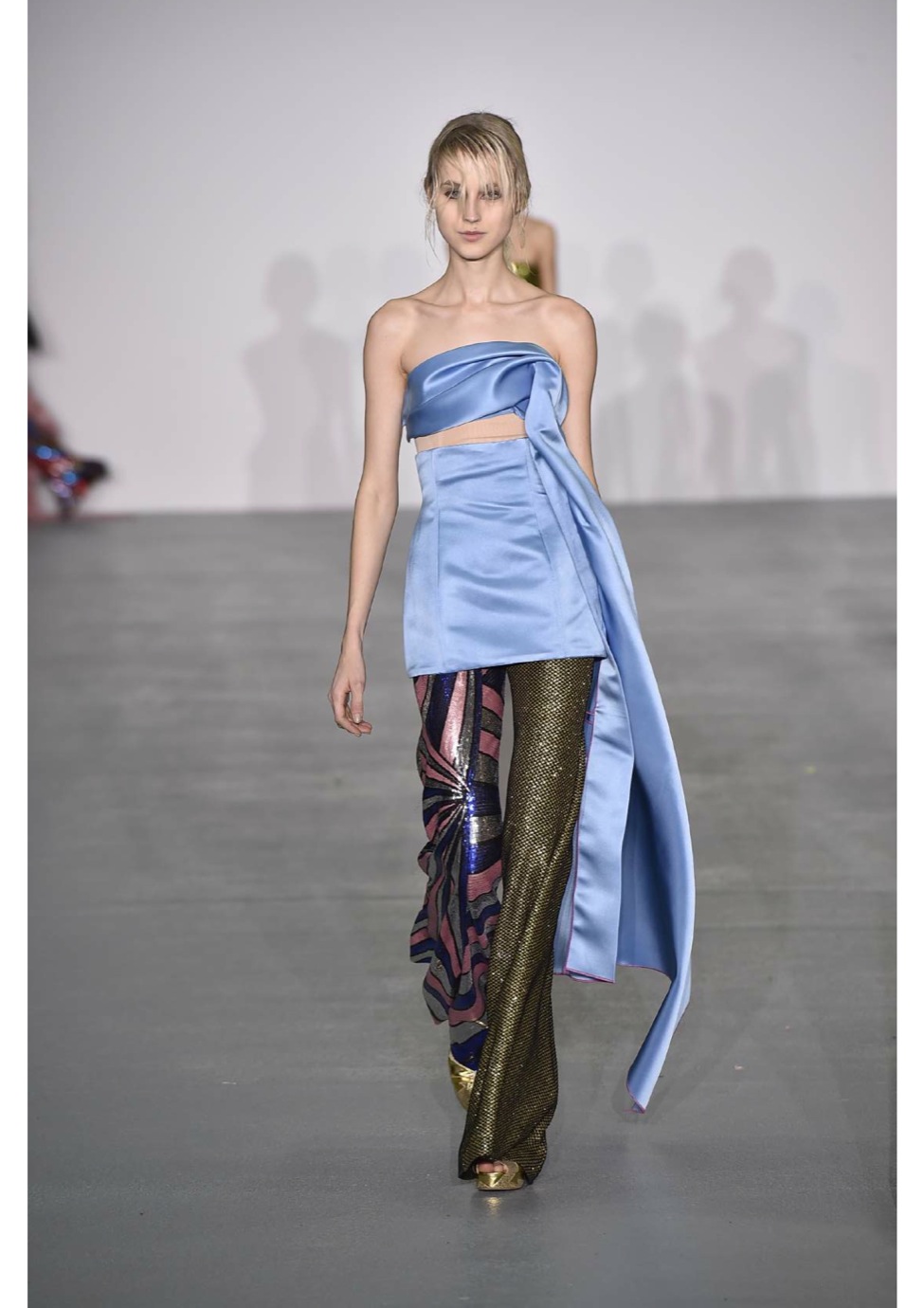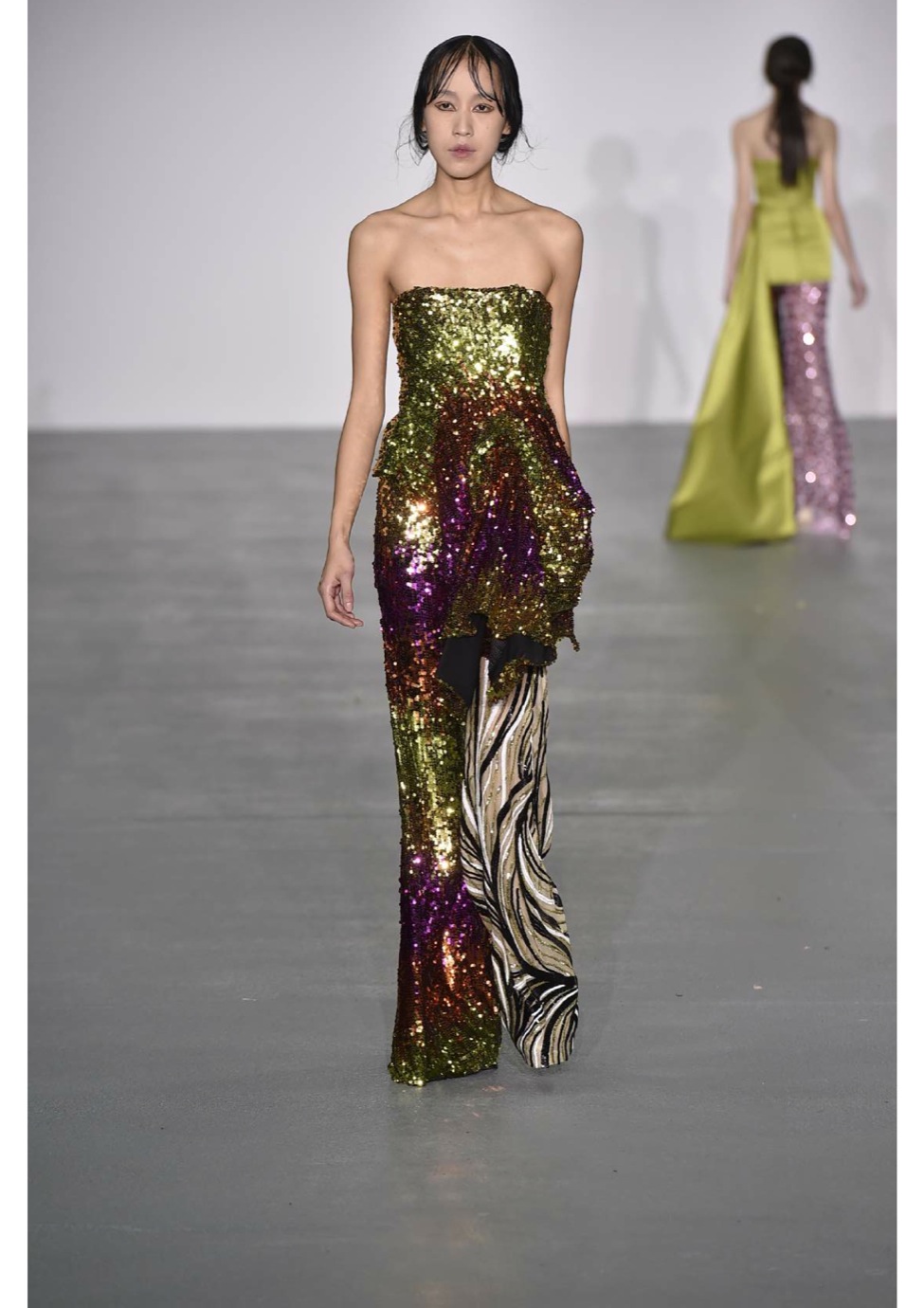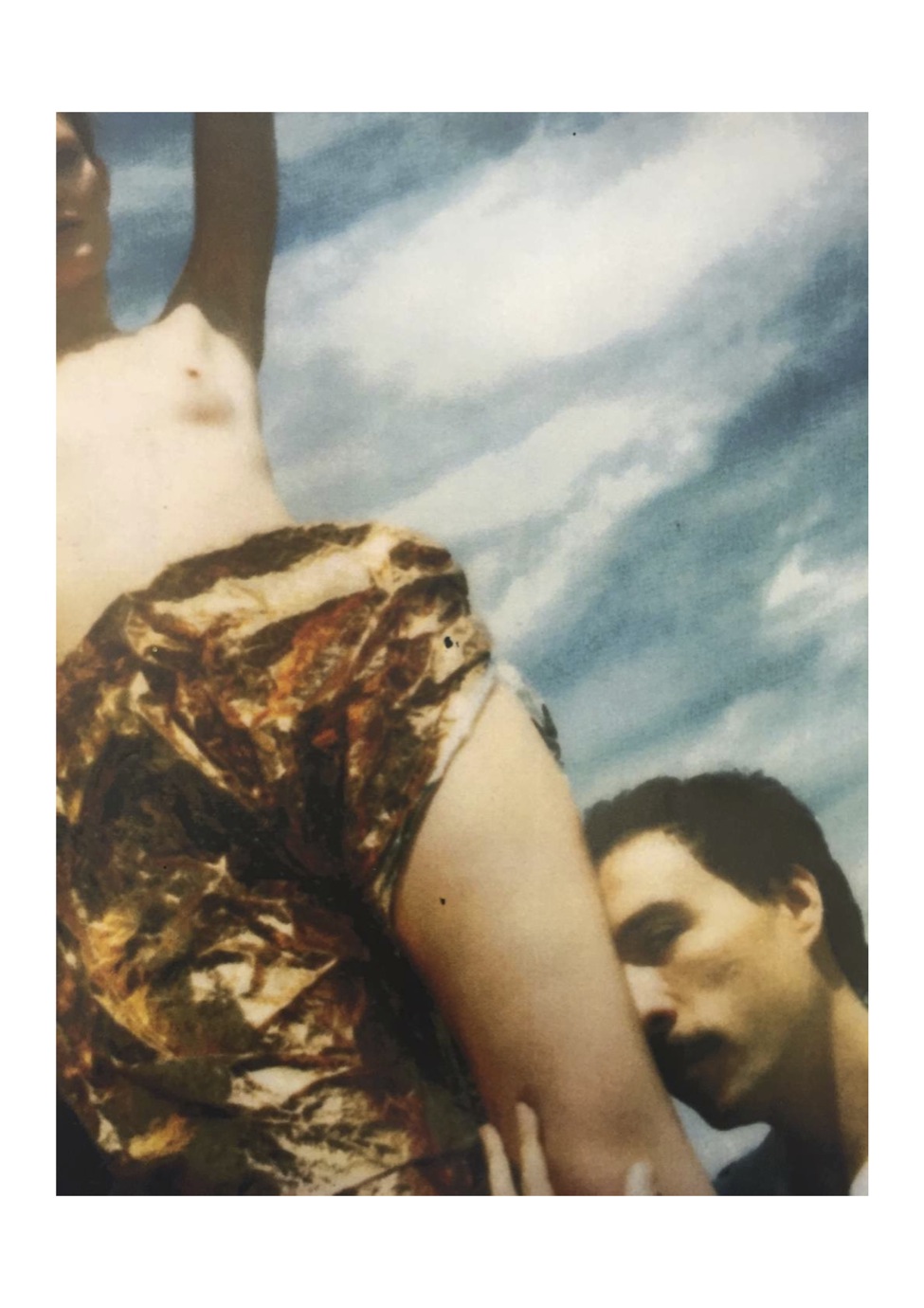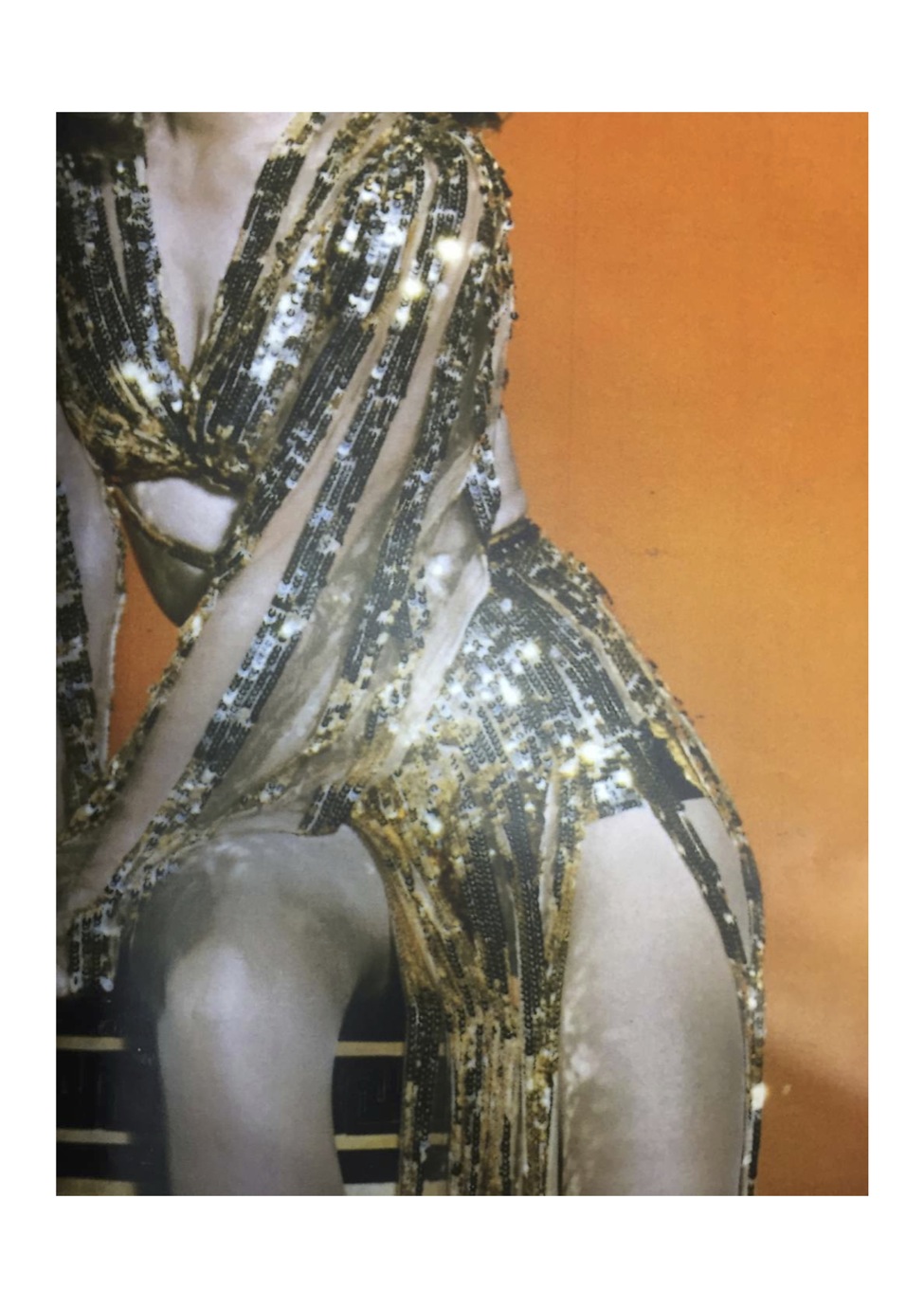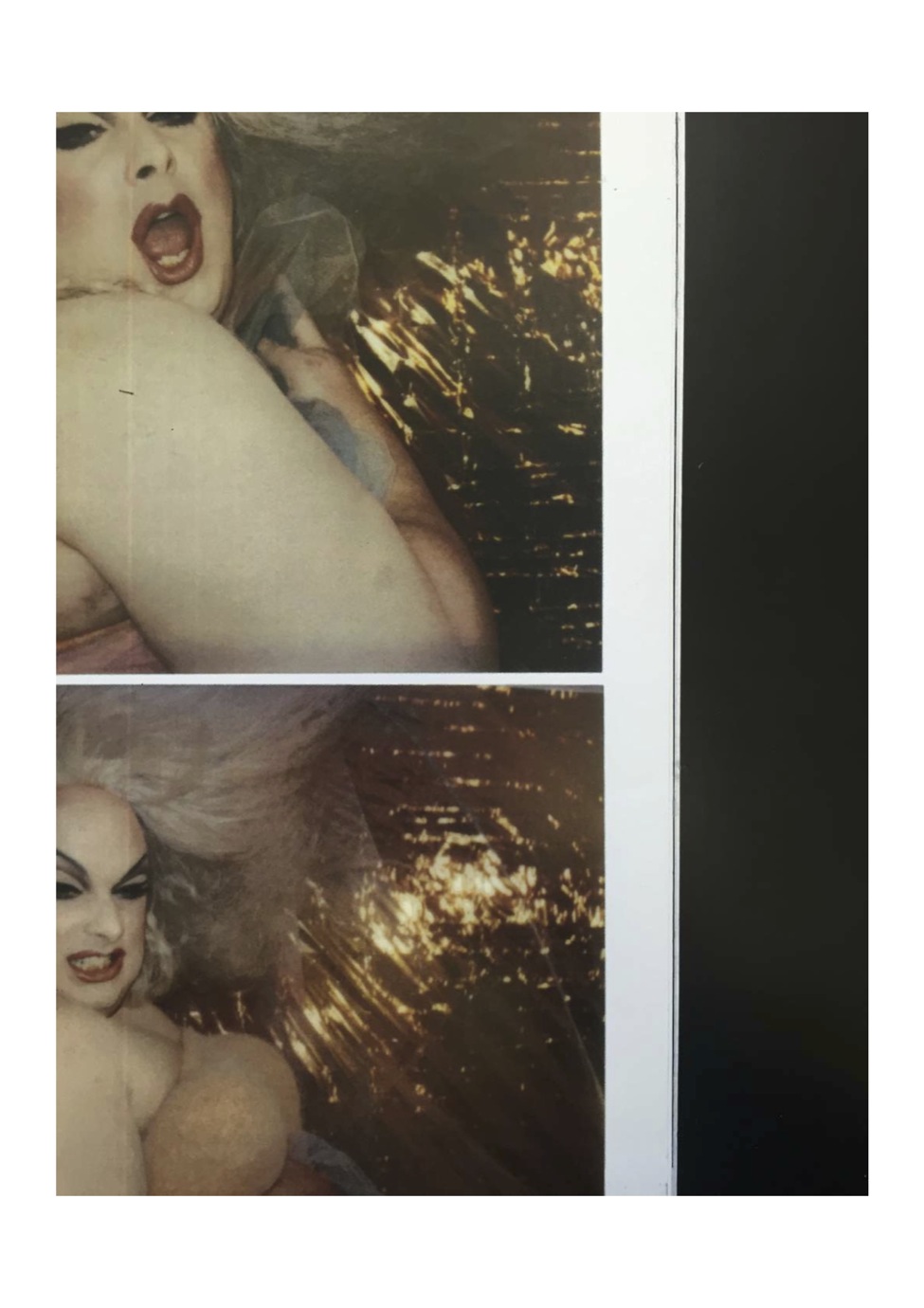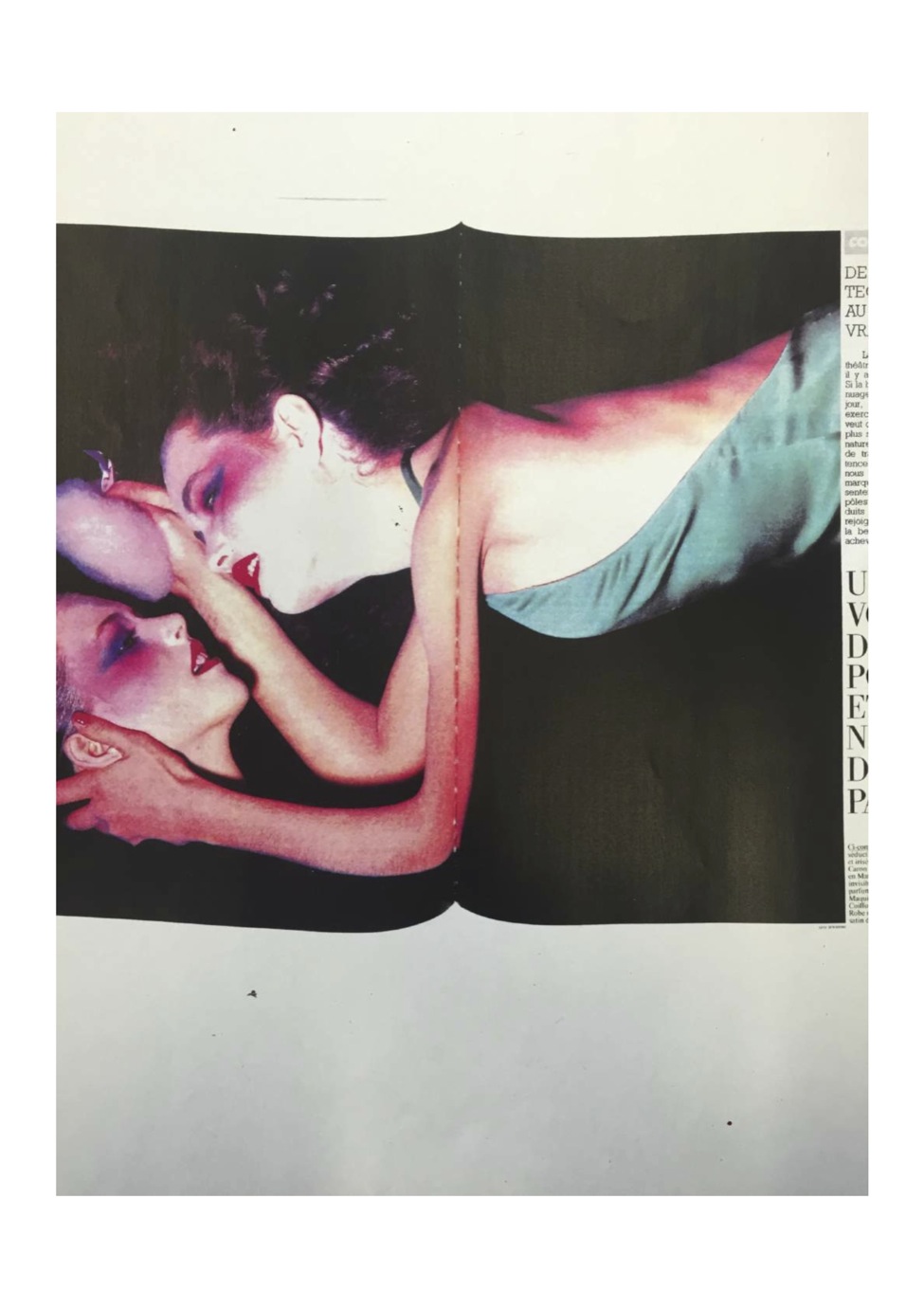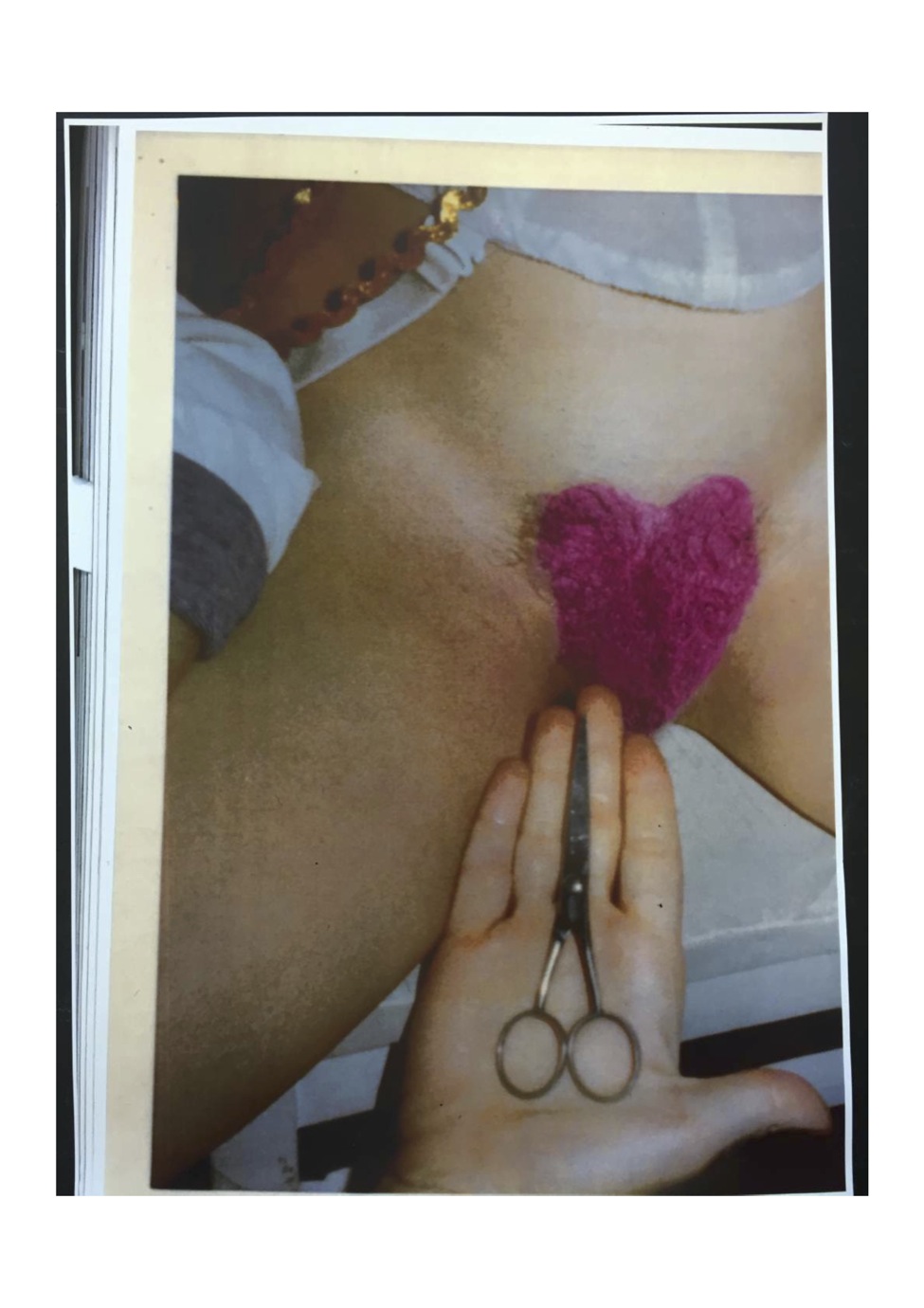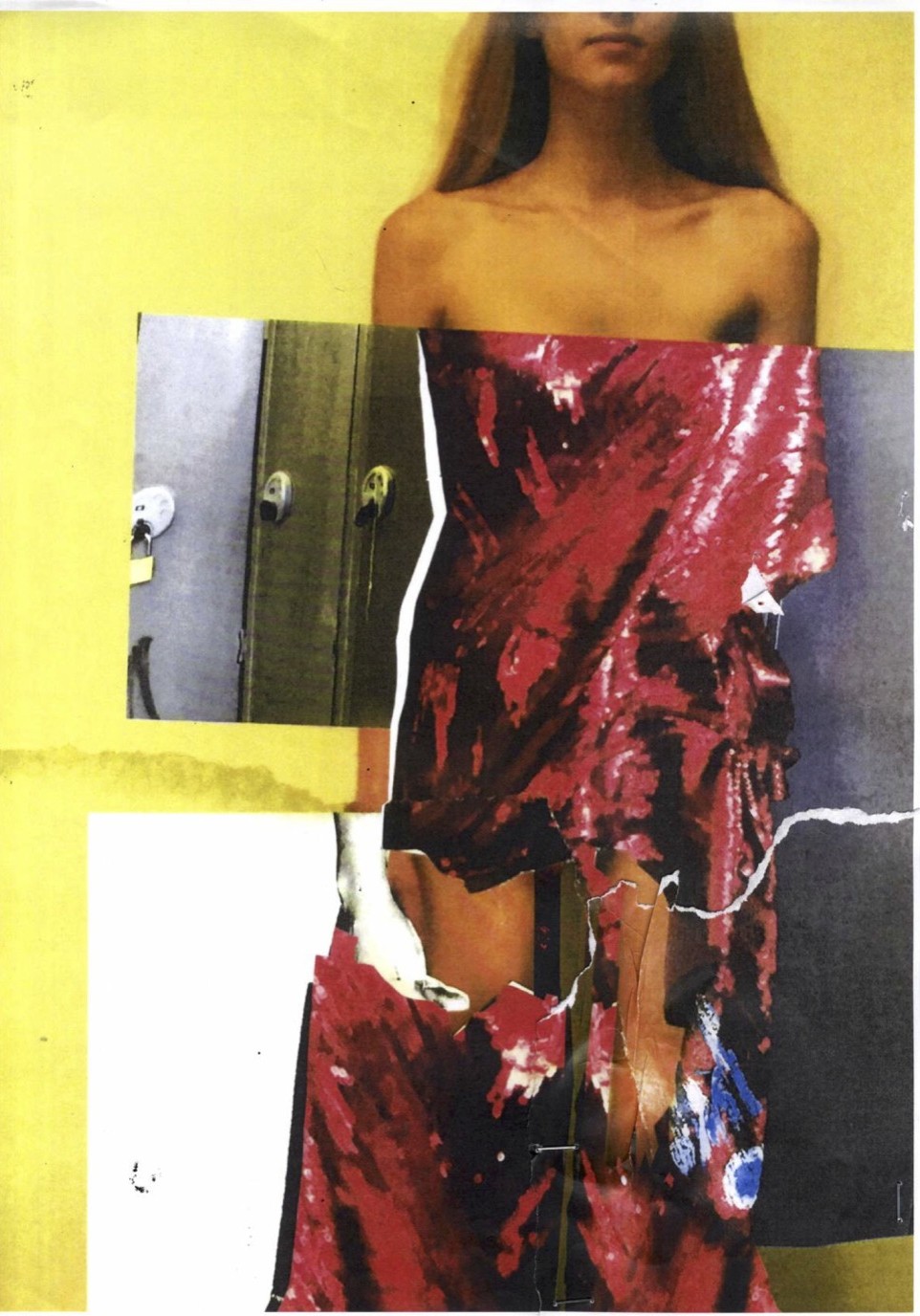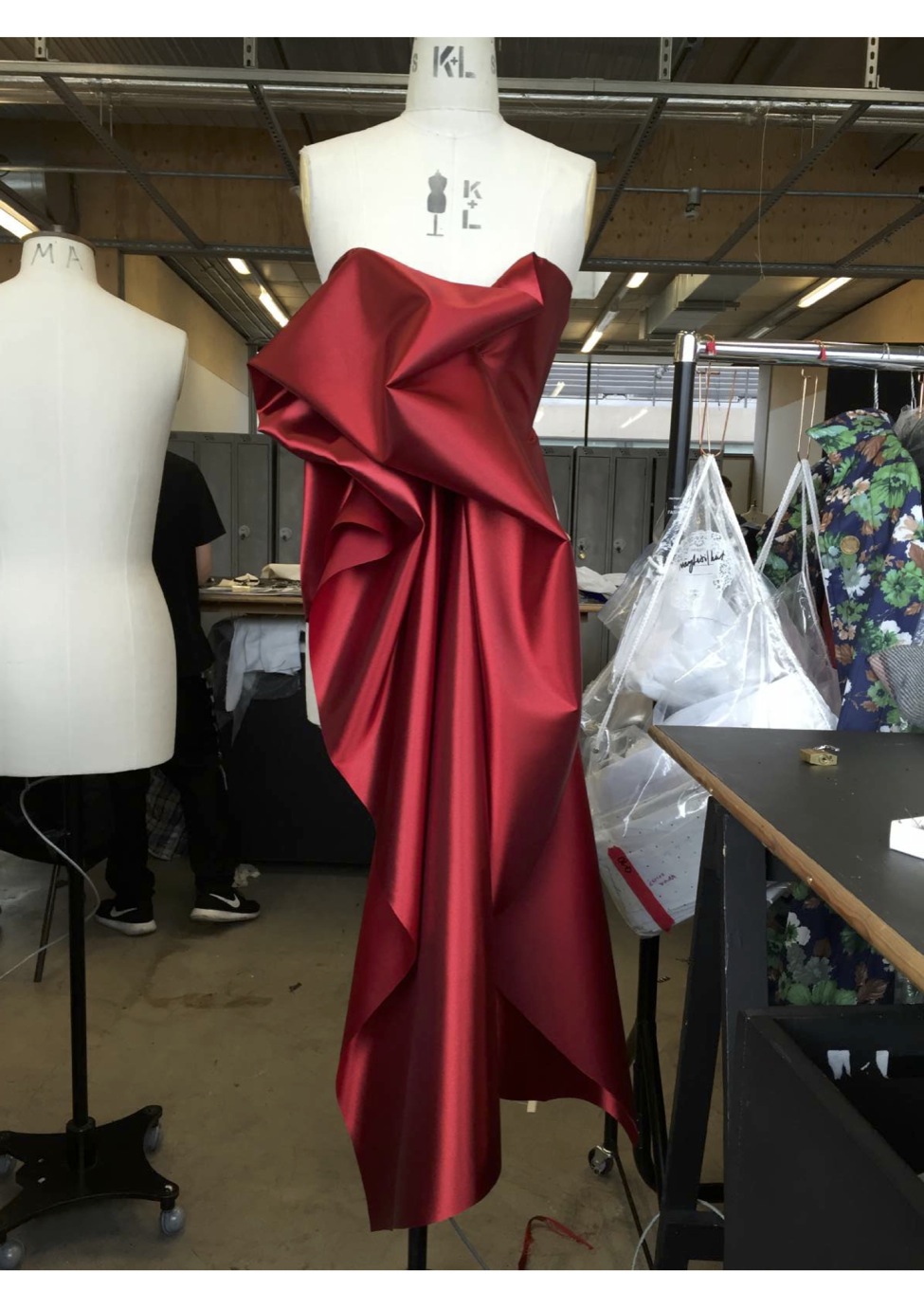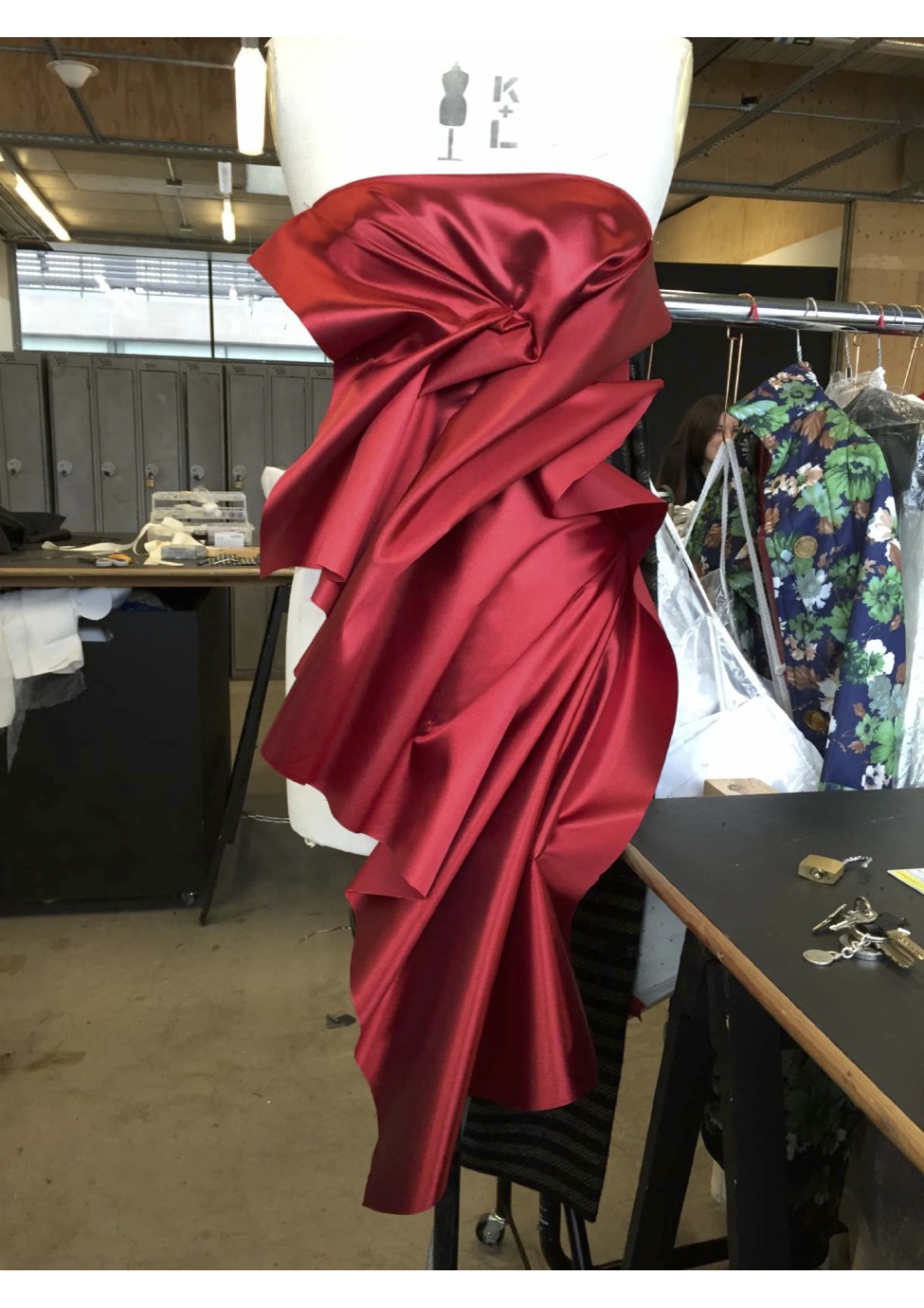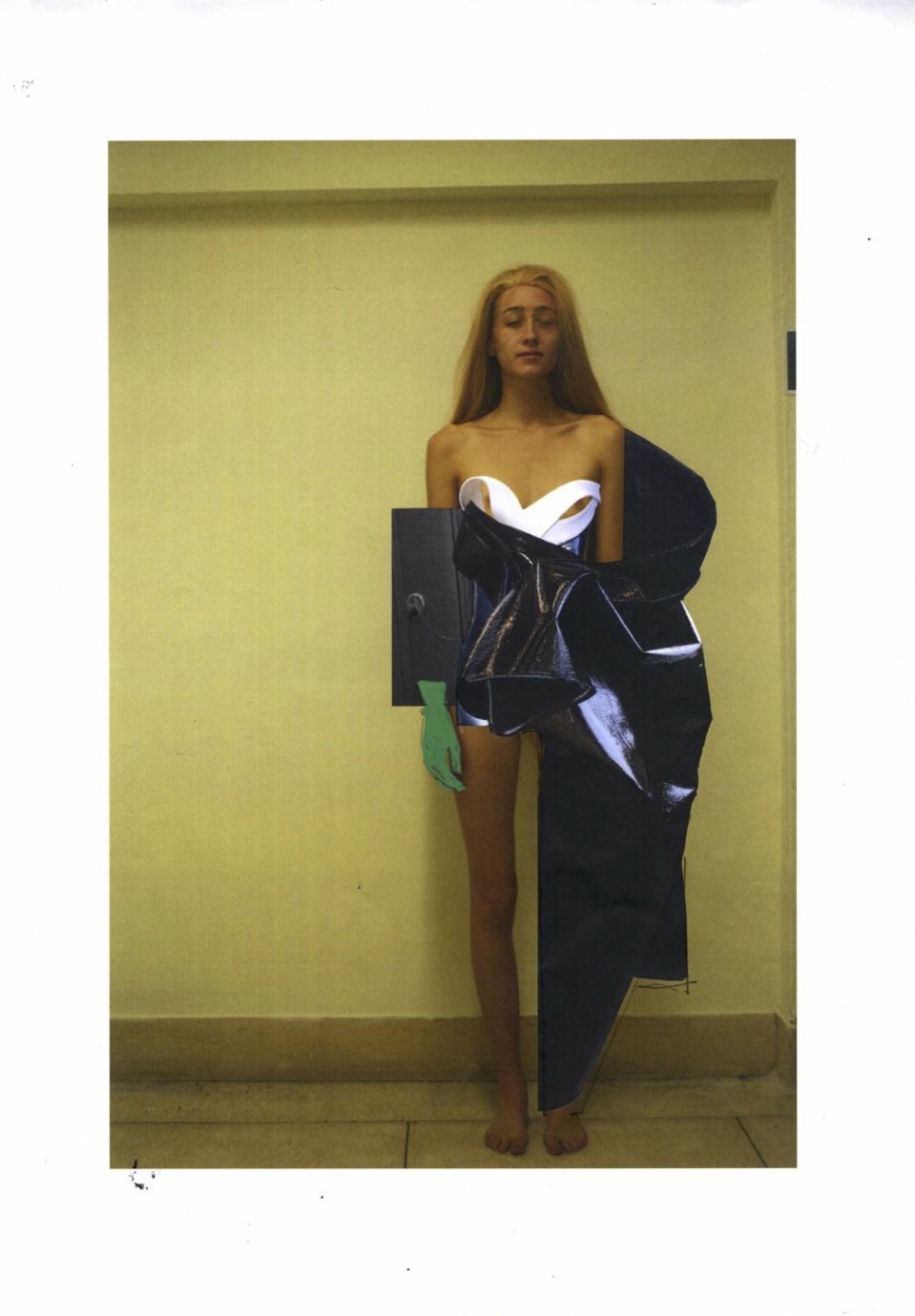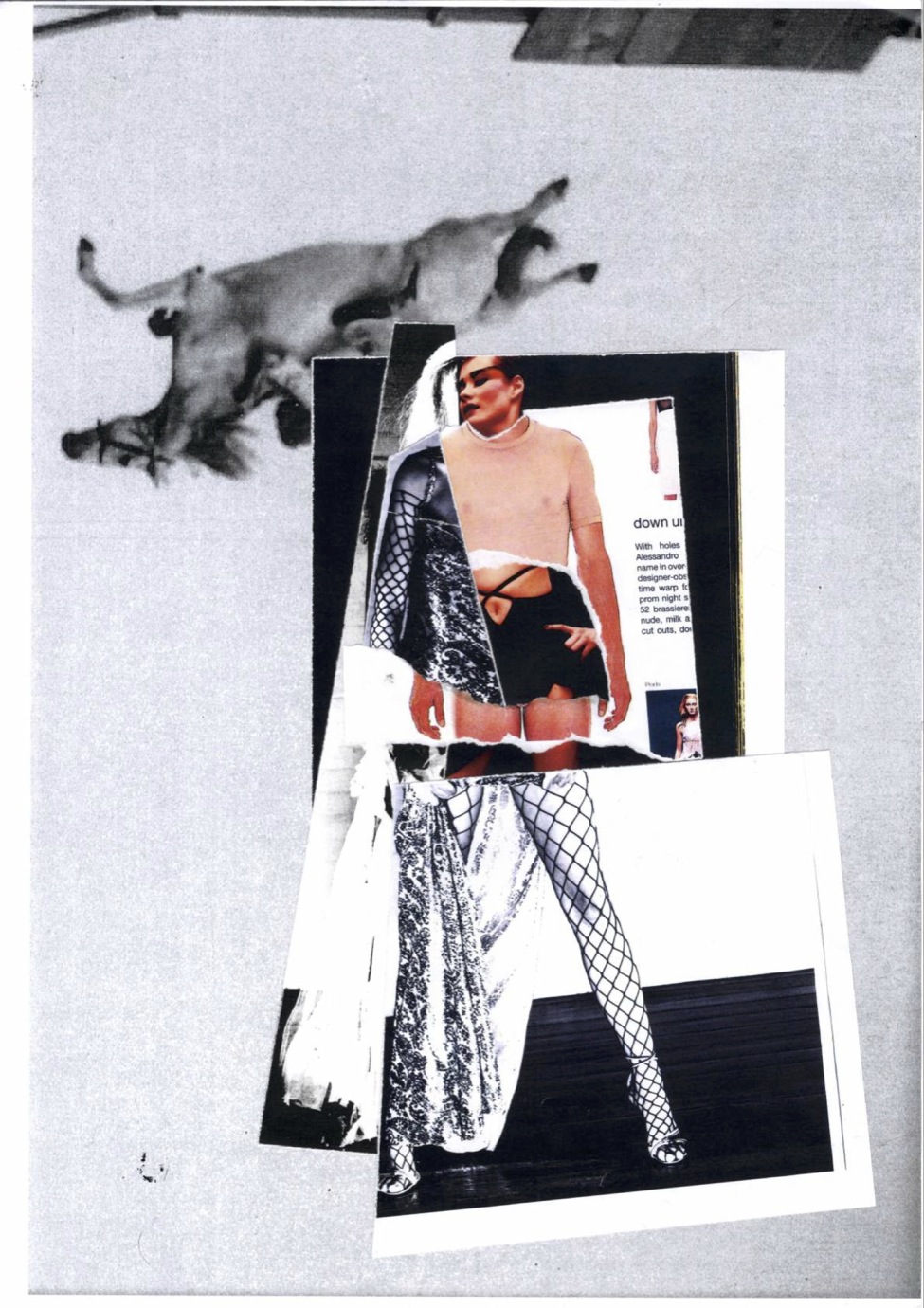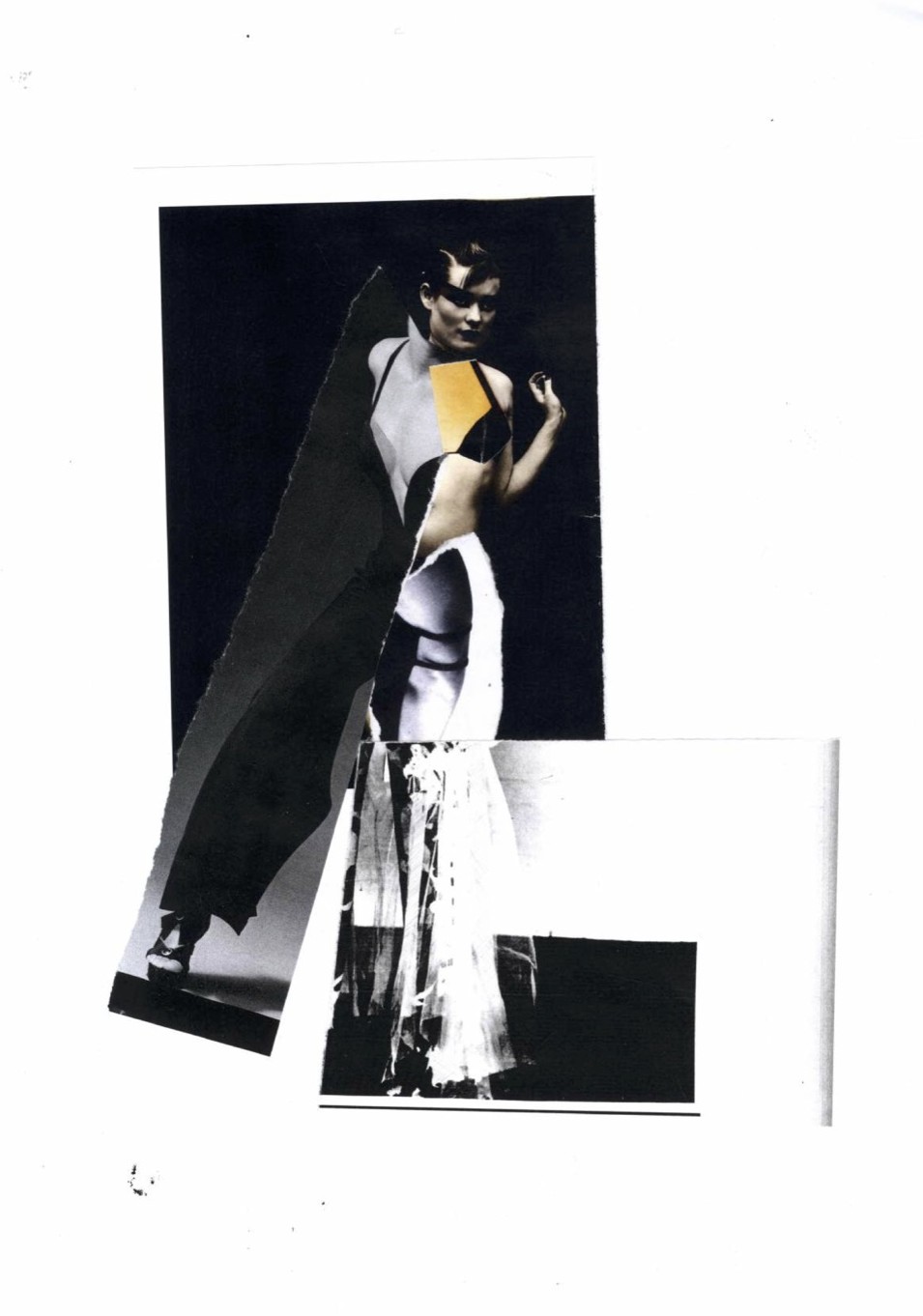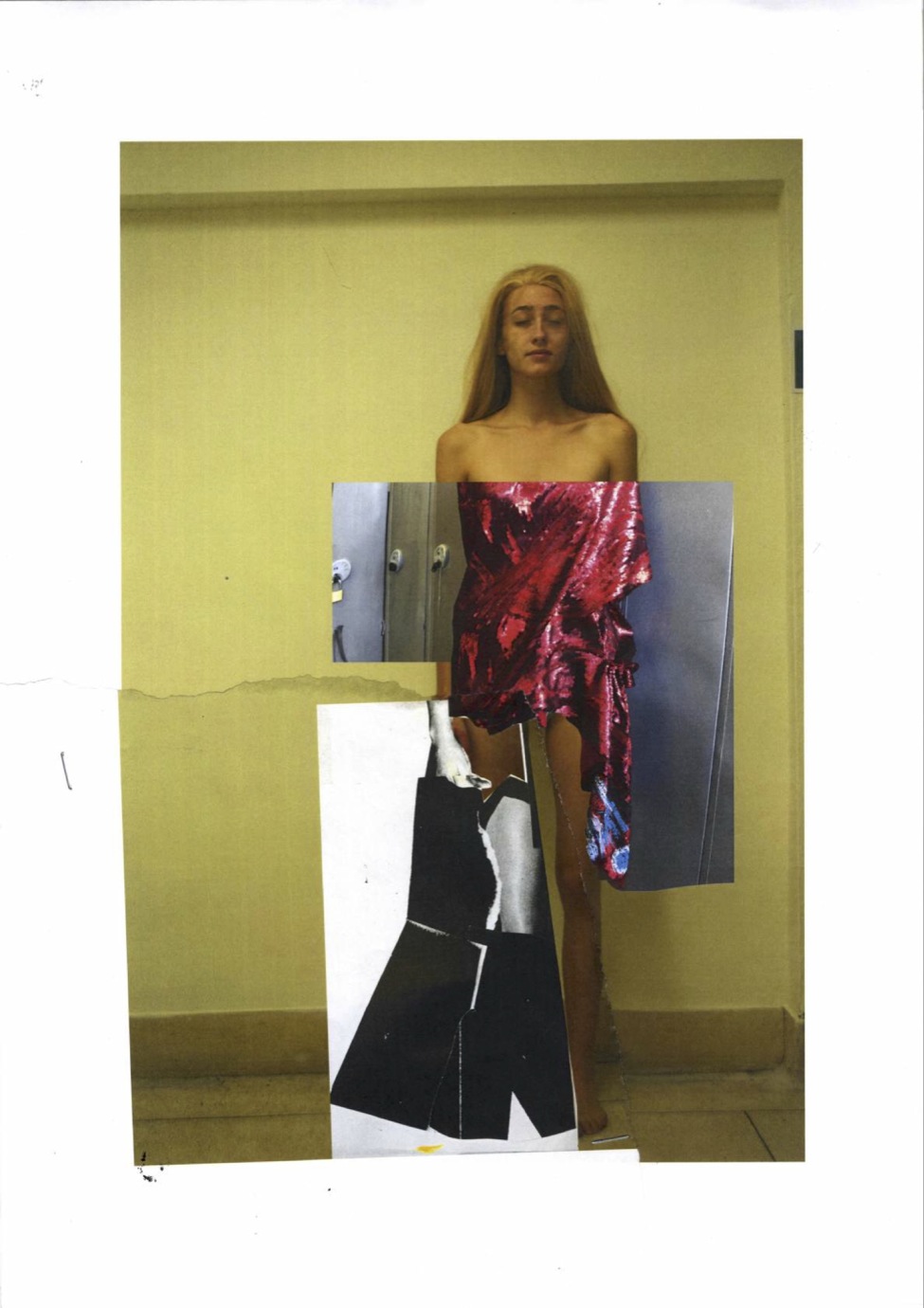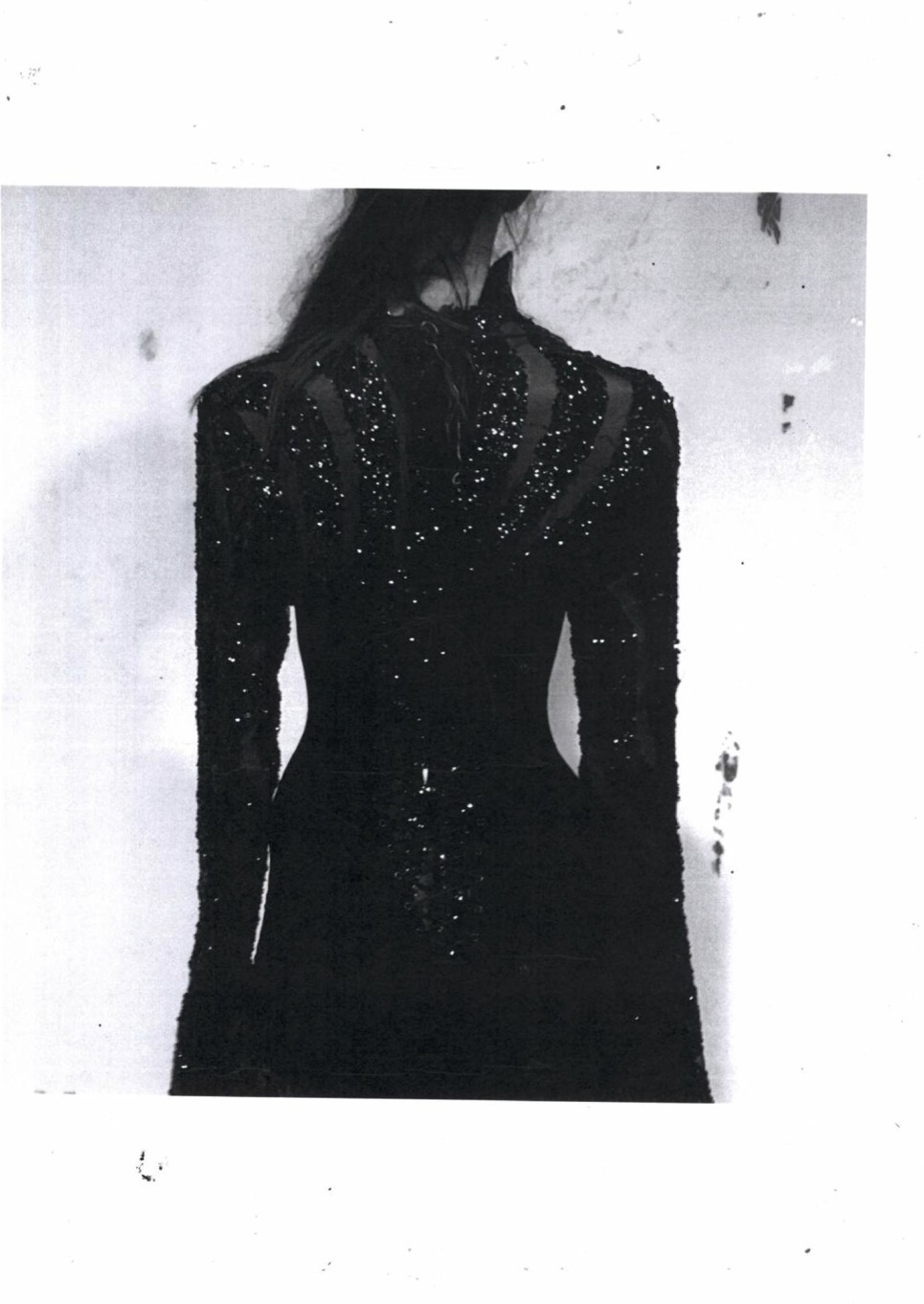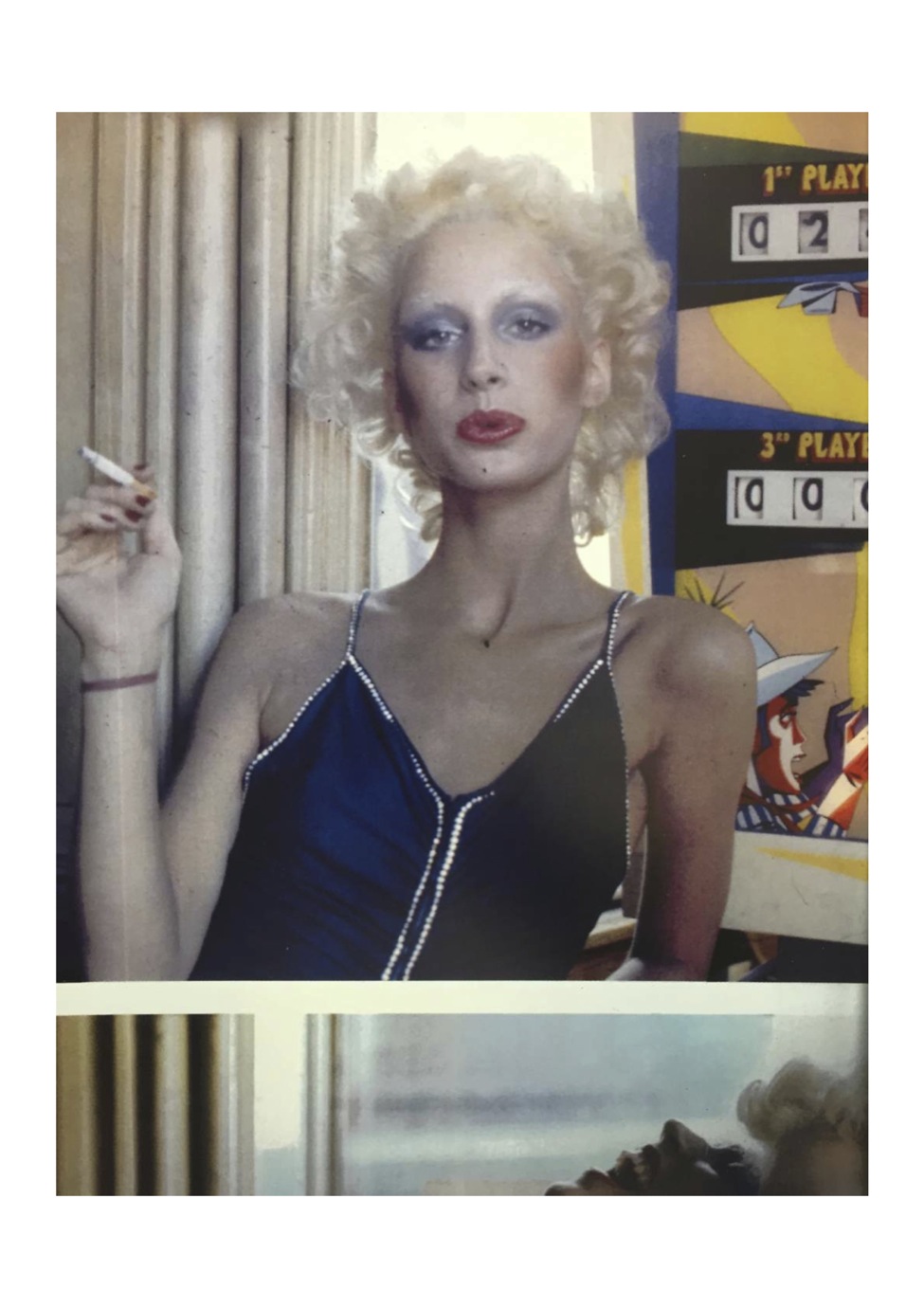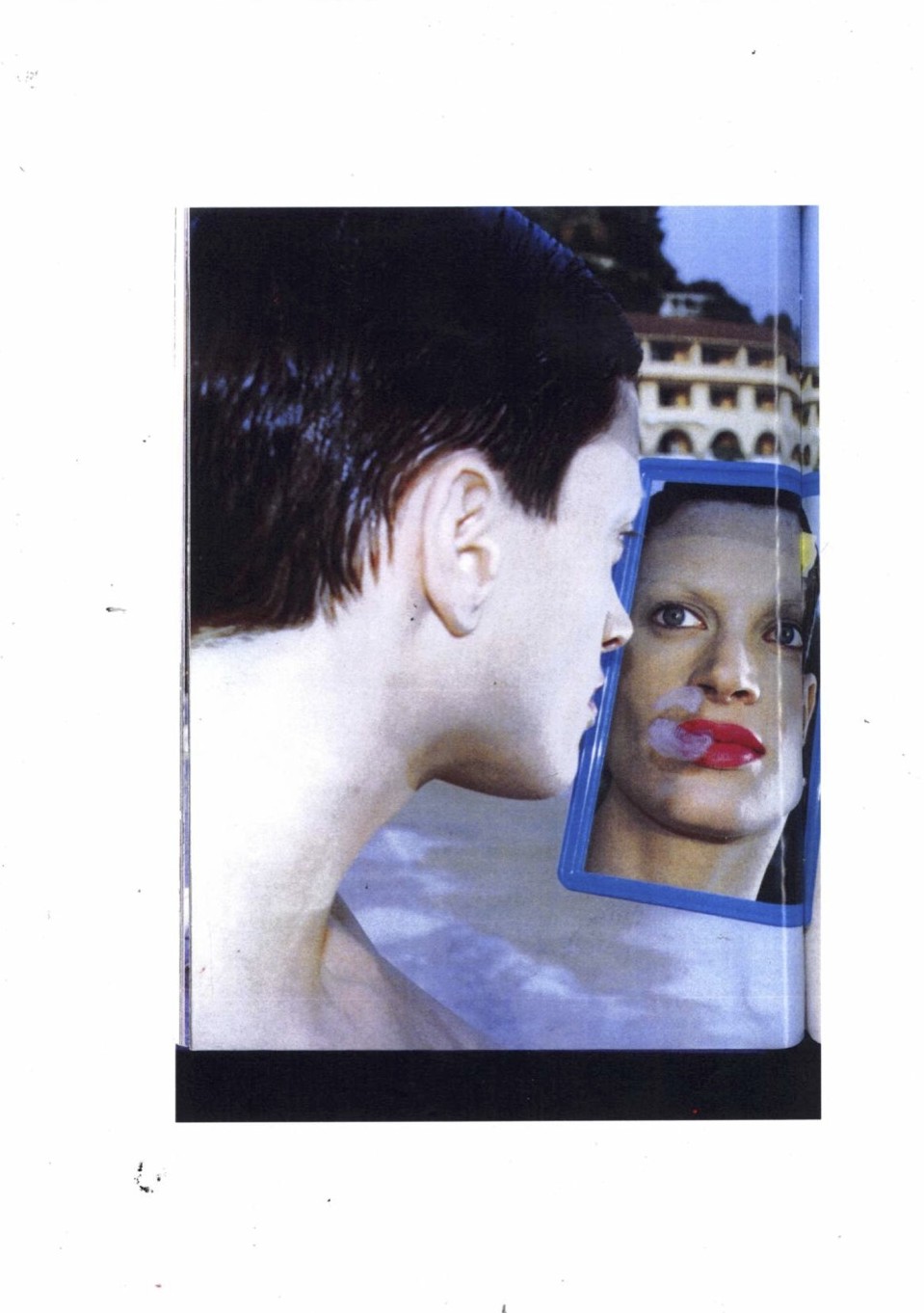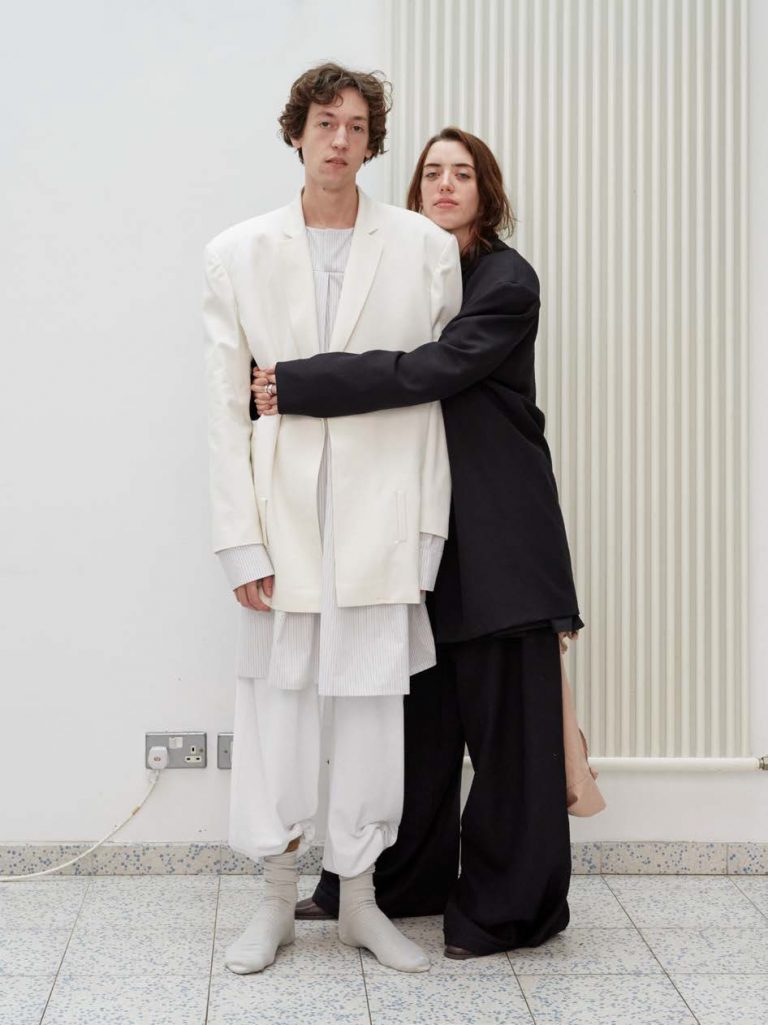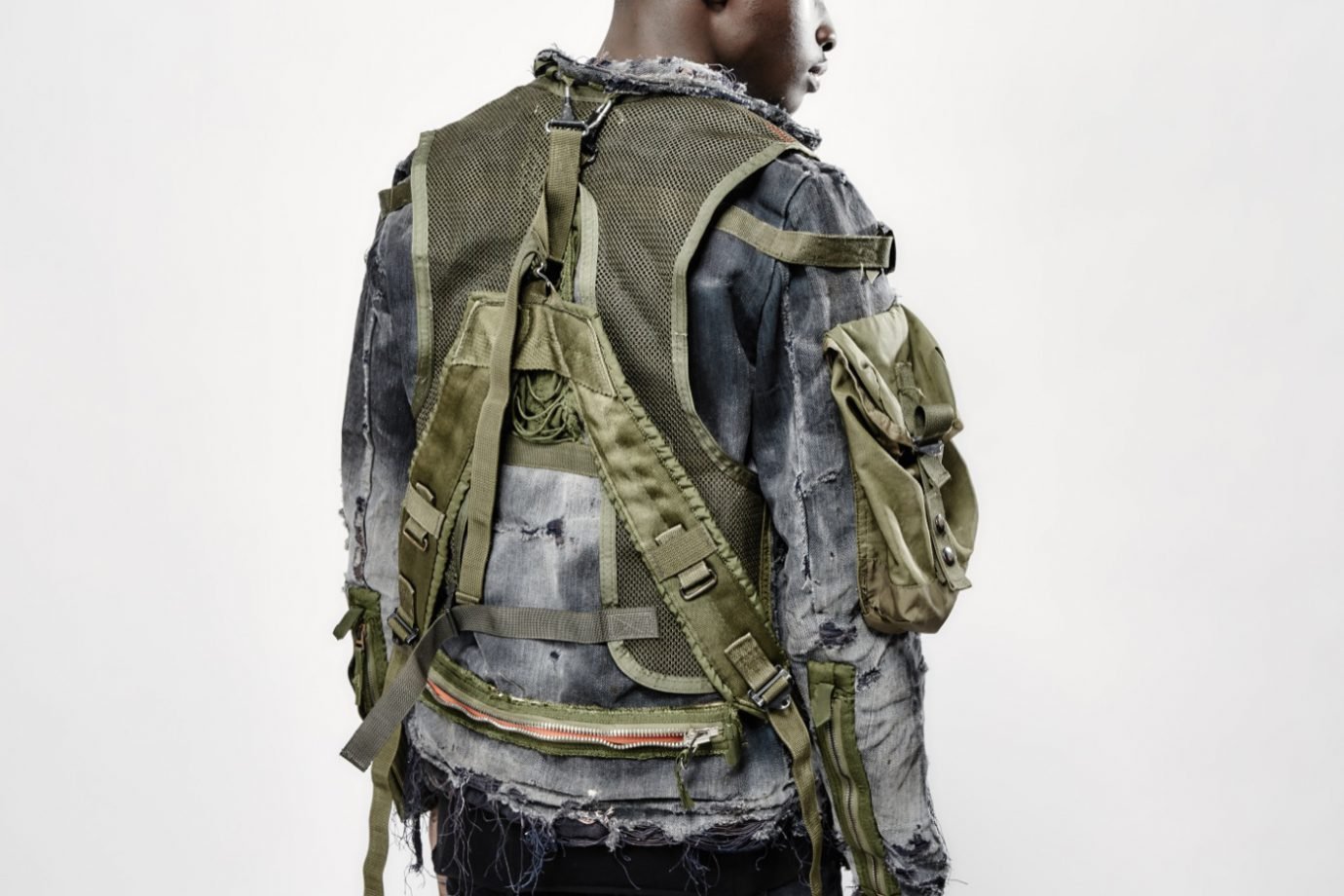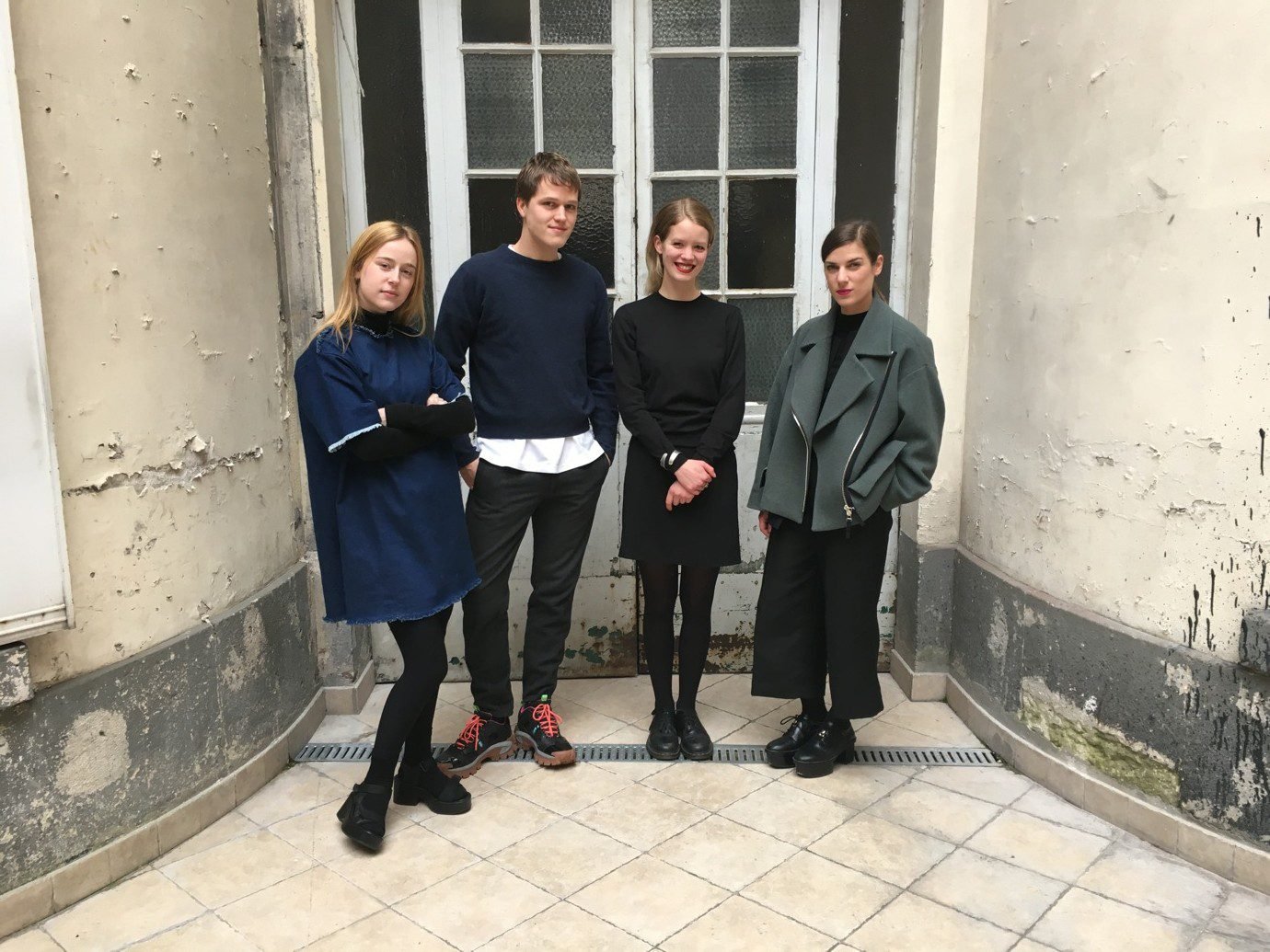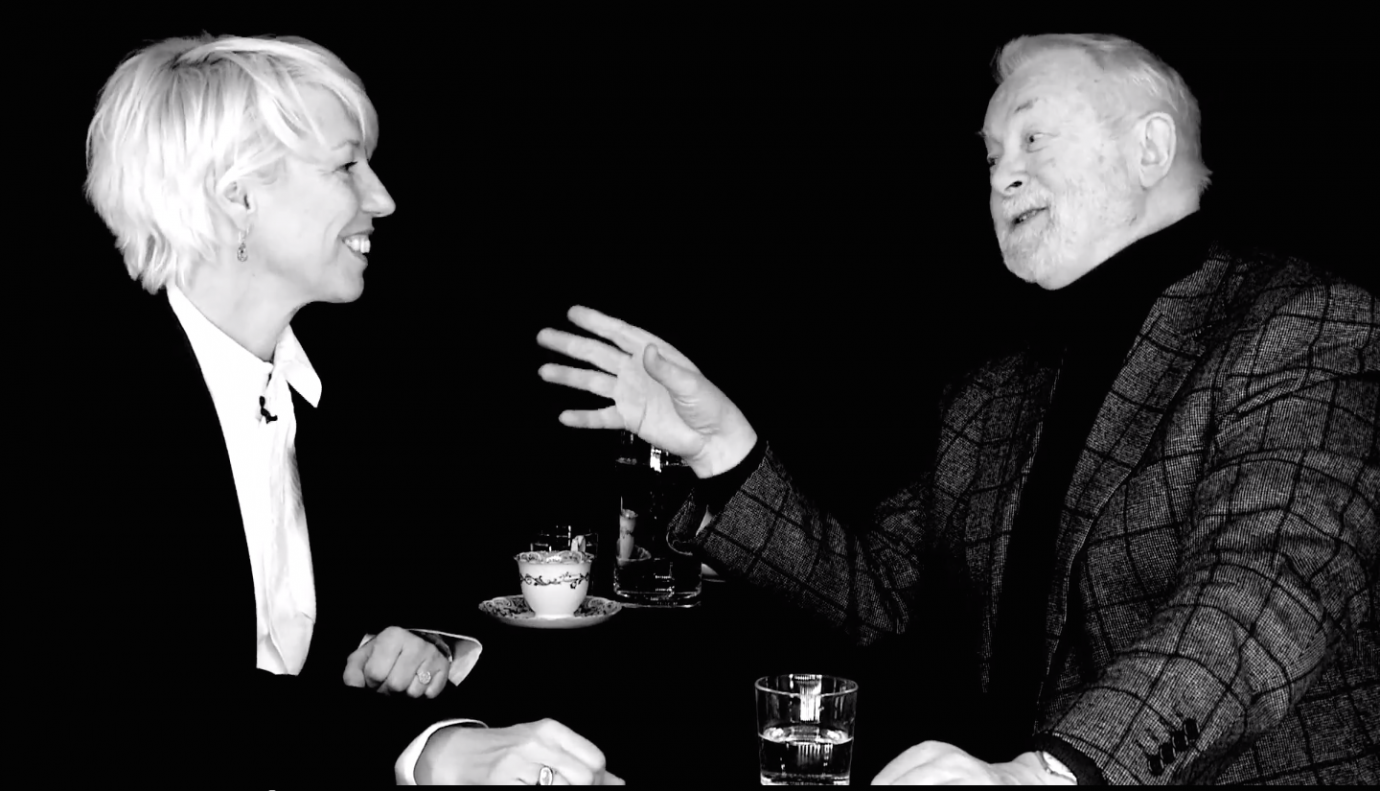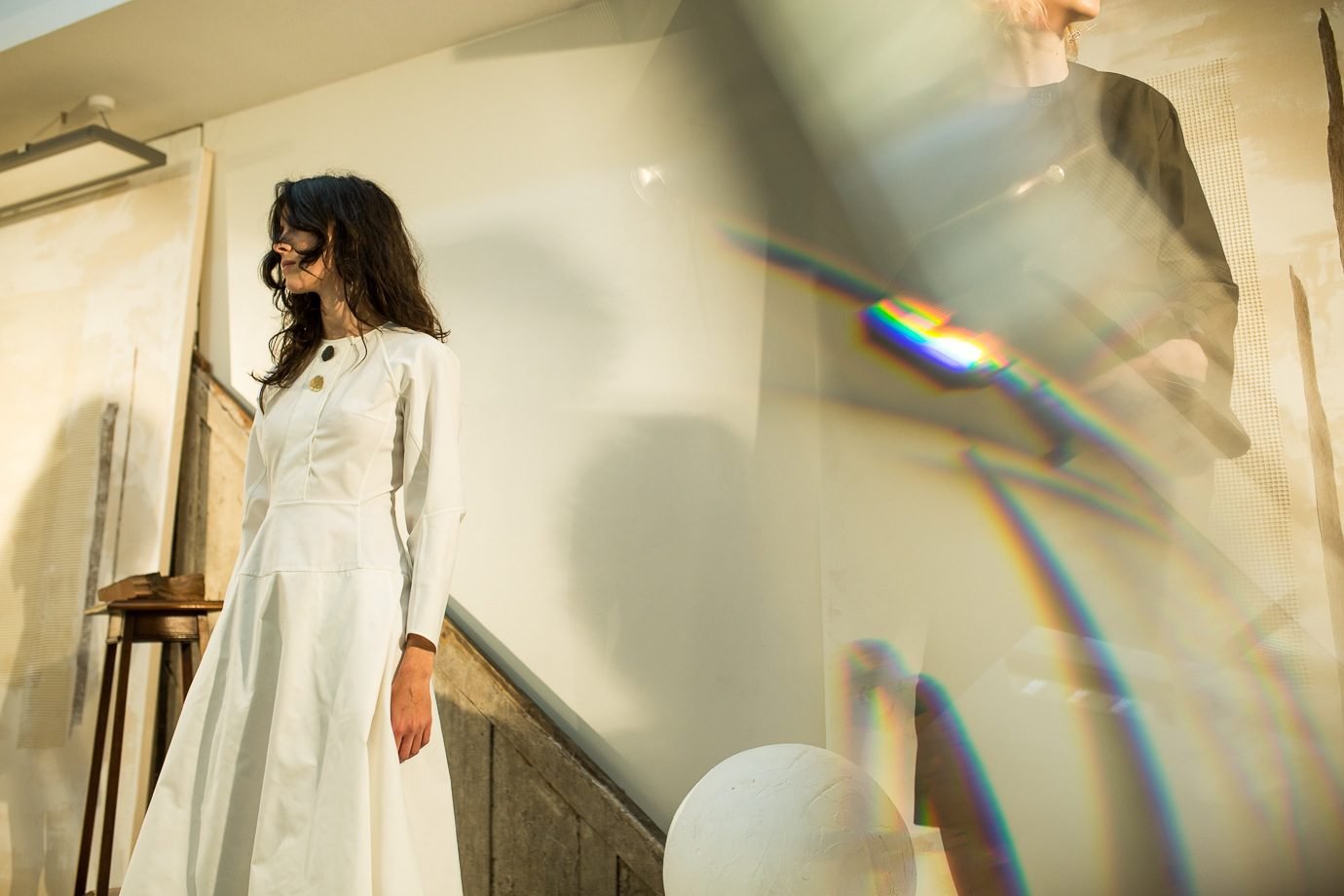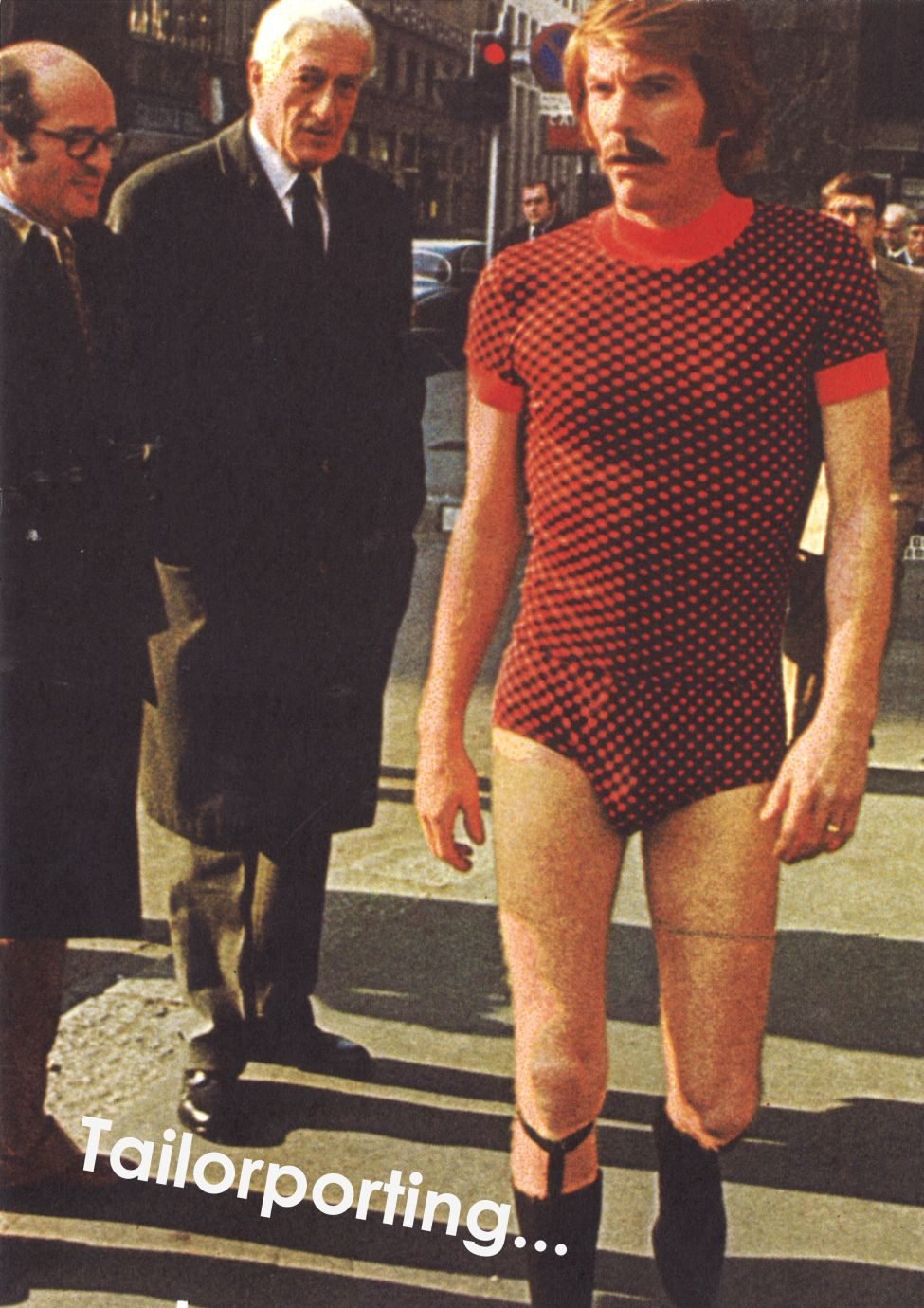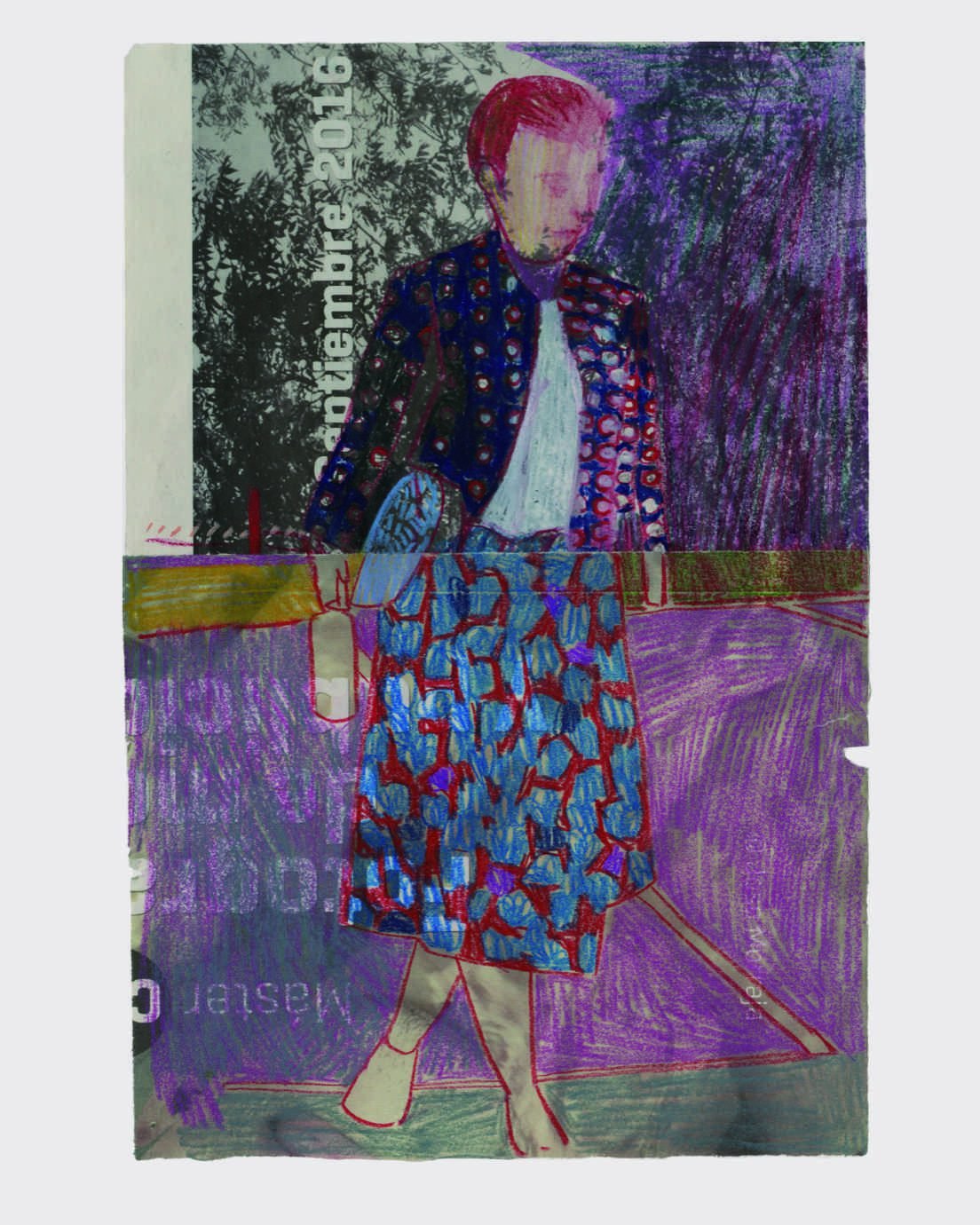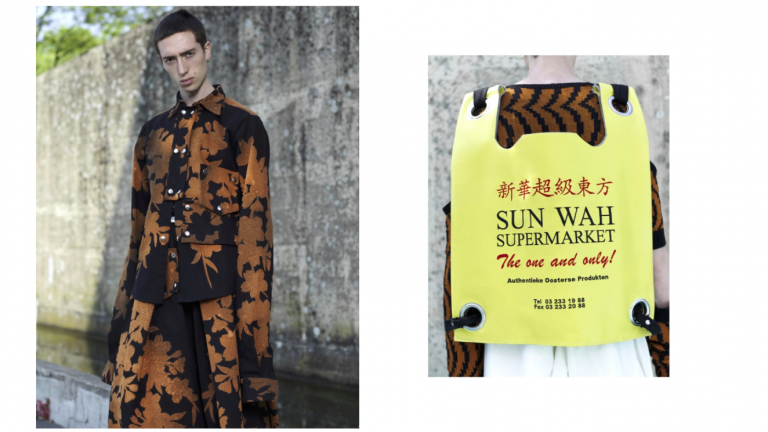“I KIND OF LIKE THAT THE SEQUINS ARE FALLING APART. THEY LOOK LIVED IN. LIKE SOMEONE’S HAD SEX IN THEM.”
In his gathering of reference images, 100-year-old photos of diving horses sit next to images of a French boudoir sex club. Hours spent in the New York Public Library’s picture department resulted in an amalgamation of elegant images of horses mid-dive alongside glamorous, sexually-driven women in corsets and bondage. “In the end, it’s really just about glamour and sexuality,” says Michael. “I fought that for awhile, but it’s actually exactly what I should be doing, though in a modern way.”
Once compiled, the looks became less about grit, as they made their way down the runway, and became works of couture. After the show, Michael studied the clothes. They’ve been abused a bit. “I kind of like that the sequins are falling apart. They look lived in. Like someone’s had sex in them.”
Now that the show is over and the course has wrapped up, Michael can reflect on his time at Central Saint Martins. “An amazing thing about this course is that if you tried to do anything that is not you or what you’re about, it’s just not going to work. It has to be so personal. And that’s something I have come away from the course so happy with – that you have this vision, and they really help you to formulate what you want to say. But it has to all come from you.” And that is something course leader Fabio Piras drilled home.
As for Michael’s future, that is still unclear. As he vaguely hints, “nothing is fully fleshed out yet. There are things happening, which is really exciting. There has been a lot of interest in my collection.” Michael can assure you that, at least for now, his collections will be one of a kind, like his graduate collection. “When you buy it, or invest in it, I want it to be like you have a piece of something really special. I see it that way, and I hope other people will too.”

